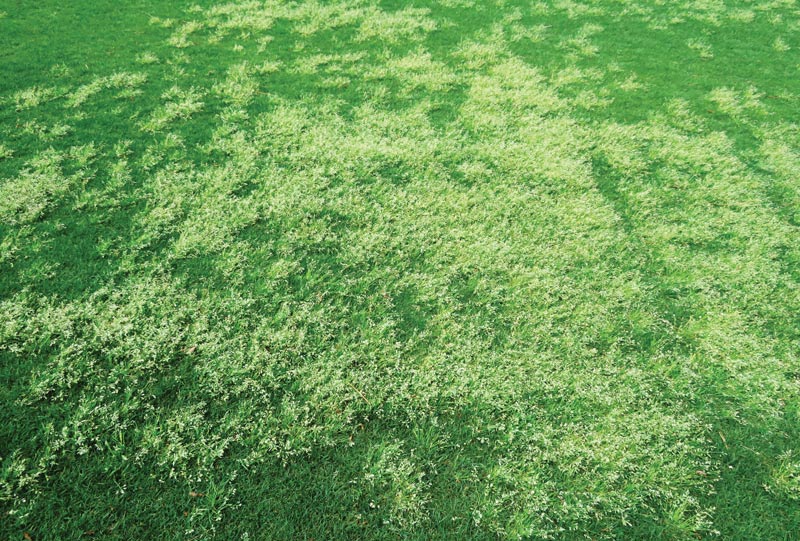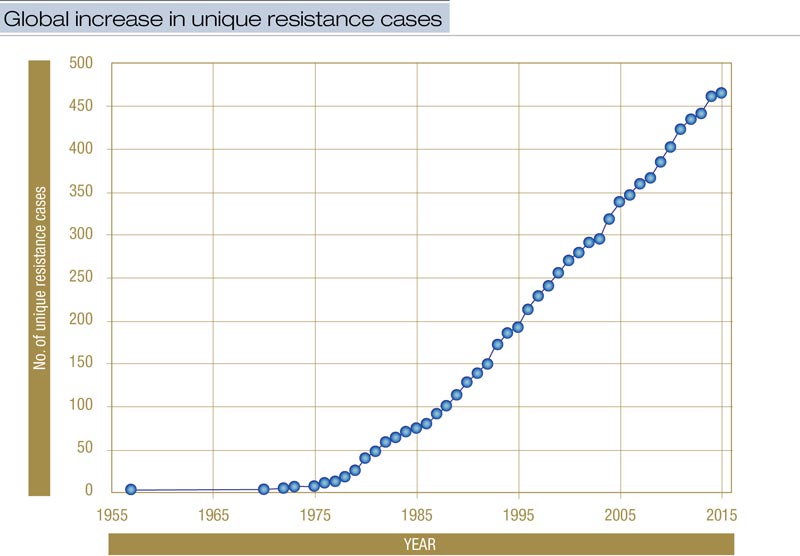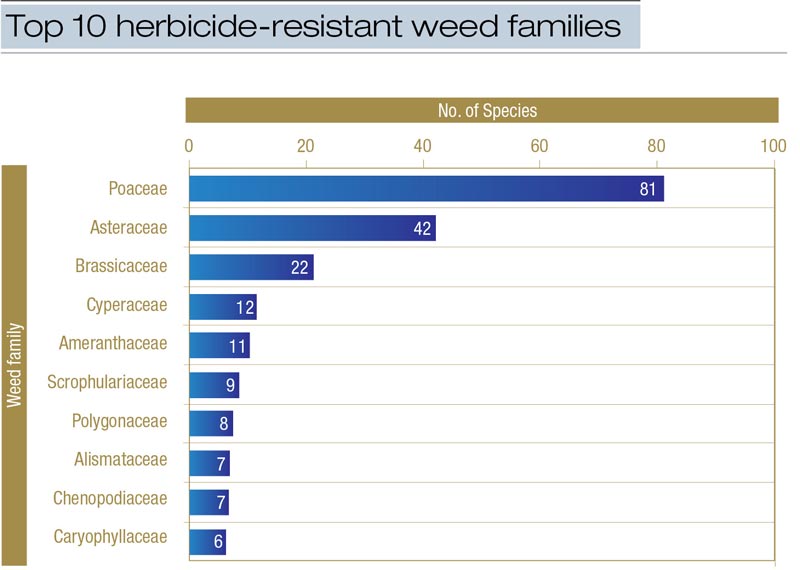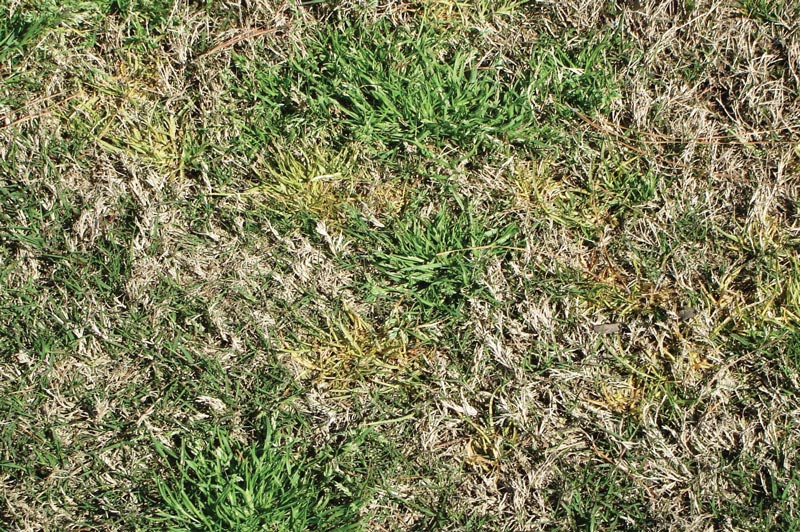
Figure 1. Poa annua continues to plague all turfgrasses throughout the world. Its wide genetic variability enables it to behave as the “cockroach” of the turf world, as it has become adaptable to many environmental and agronomic practices. Photos by Bert McCarty
Poa annua L. is a highly variable plant from its evolutionary origin as an allotetraploid hybrid between Poa infirma and Poa supina (Figure 1). It survives as a weed because of its high genotypical and phenotypical variability, rapid germination, survival when uprooted, tolerance to compacted soils, and, most recently, development of resistance to herbicides.
As part of its genetic variability, resistance to all herbicidal modes of action occurs. Fortunately, resistance is mostly local in nature, but it is expanding rapidly. With this rapid increase in resistance and lessons learned from agronomic row crops, we believe a fundamental paradigm shift in control strategies is needed, in addition to cultural practices that help minimize the presence of P. annua to begin with. Although P. annua is a global problem in all turfgrass situations, this article will focus on control strategies in non-overseeded bermudagrass and zoysiagrass.
Most pesticides in turf (and almost all herbicides) are also registered in field crops. The turfgrass industry benefits from this, as many of the basic environmental and toxicology tests required by the U.S. EPA have already been completed by the time these products have reached the turfgrass market.

Figure 2. Global increase in unique cases of herbicide resistance. Data includes herbicide resistance in all of agriculture, including turfgrasses. New cases of herbicide resistance are discovered every year. Illustration by Ian Heap, www.weedscience.org, 2018

Figure 3. Top 10 weed families that have evolved resistance to herbicides. Poaceae has nearly twice as many species as any other plant family, likely because of the wide genetic variability in this family. Illustration by Ian Heap, www.weedscience.org, 2018
The Weed Science Society of America (both authors are active members) tracks worldwide herbicide resistance. Figures 2 and 3 (above) indicate two very disturbing trends. Figure 2 tracks the increase in cases of unique herbicide resistance. Unique herbicide resistance is defined as resistance of a particular weed to a specific mode of action. For instance, if 1,000 cases of simazine-resistant P. annua exist, that counts as only one unique case of resistance. Figure 3 indicates members of the Poa grass family (Poaceae) account for nearly twice as many cases of resistance as any other family of weeds. We believe this is due to wide genetic variation in the Poa family of plants. Many agricultural scientists (including these authors) think herbicide resistance is the most worrisome trend in worldwide agriculture.
The incidence of resistance in turfgrasses is abundant in many areas of the country. In some areas, herbicide resistance on putting greens is so extensive that the only course of action is to shut down and renovate using dazomet (Basamid, AMVAC). Everyone would agree this is not a good position for most golf courses. Therefore, it is time for everyone (turfgrass managers, industry personnel, university researchers, distributors, etc.) to get serious about herbicide resistance.
Herbicide resistance in plants
Given that no new herbicidal mode of action has been introduced to the turfgrass market in more than 25 years, and that no new ones are on the horizon, being best stewards of existing products is the primary way to delay resistance while maximizing the usefulness of these products.
Contrary to what many think, herbicides do not cause resistance to occur or develop in plants. Resistance follows Darwin’s theory of evolution by natural selection, where resistant populations naturally exist, and susceptible biotypes are removed with repetitive use of herbicides. This leaves little competition for the normally low populations of resistant biotypes, and allows them to spread rapidly (Figure 4, below).

Figure 4. A classic example of a mixed Poa annua population, in which green, healthy plants are resistant to herbicides, while adjacent yellow, dying ones are susceptible to herbicides.
Predictive models and history suggest continued use of a product with a single mode of action usually results in resistance developing in approximately 10 years, although as few as seven years has been observed. However, by rotating or mixing products with different modes of action, one can dramatically extend the time before resistance occurs.
For example, it is predicted that it takes 45 years to produce resistance if a herbicide with a particular mode of action is used for two consecutive years and then rotated to another product for the third year. Sixty years are predicted for resistance to develop if herbicides are rotated annually, and resistance can be delayed for up to 90 years if a product with a particular mode of action is used in only one of three years, and products with other modes of action are used in rotation in the other two years.
Resistance most often occurs when an amino acid associated with the plant’s DNA strand is replaced by other amino acids. This substitution then causes plants to overproduce enzymes that the herbicide normally blocks. Alternatively, extrachromosomal DNA molecules are produced that overproduce various enzymes that are normally blocked by certain herbicides. From a scientific point of view, it is important to know the specific avenues by which resistance occurs, but end users are more interested in managing its occurrence.
Herbicide use strategies
We believe that adjusting the regular application timing is just as important to delaying resistance as alternating or combining herbicides that have different modes of action.
For example, on fairways and roughs, instead of using a traditional pre-emergence herbicide in late summer/early fall, it is better to wait until mid-fall and combine traditional pre-emergence herbicides with herbicides with early post-emergence activity. About 75% of yearly Poa annua germination occurs in late September through October, when daytime temperatures are consistently in the mid-70s F (~24 C). Postponing treatments until mid-fall (e.g., November), when most of the yearly crop of P. annua has germinated but plants are still relatively small and mostly not noticeable, makes P. annua control easier.
Combining pre-emergence and post-emergence herbicides removes the first regular pre-emergence application and thereby reduces the herbicide load being applied, making this practice a sound component of a resistance strategy. Another sound component of resistance management is tank-mixing products with different modes of action, which should also delay resistance, as explained earlier.
Northern and transitional zone use strategies
Table 1, Modes of action of herbicides for Poa annua control, lists the products most often used for pre-emergence and post-emergence Poa annua control in non-overseeded bermudagrass and zoysiagrass in areas that experience total dormancy each year. In order to implement this control strategy, we suggest a three-year rotation of tank-mixing different herbicides with three modes of action.
One component of this mixture should be a pre-emergence herbicide as shown in the left-hand column of Table 1. Simazine should be added to this pre-emergence herbicide. Isolated pockets of P. annua are resistant to simazine, but because simazine has a different mode of action and good activity on small P. annua plants, is relatively cost-effective, and has some broadleaf activity, it possesses a lot of positives.
Another post-emergence herbicide with a different mode of action should also be included with the pre-emergence and simazine combination. In fall, when the turf is still green, we suggest either pronamide or an ALS (acetolactate synthase)-inhibiting product such as foramsulfuron, trifloxysulfuron, flazasulfuron or rimsulfuron. After the turf has gone completely dormant, one of the nonselective products could be considered. This holistic strategy actually incorporates four different modes of action and has proved very effective.
The following year, a pre-emergence herbicide with a different mode of action should be tank-mixed, again with simazine and either pronamide or an ALS product not used the first year. If a nonselective product is needed once the turf is dormant, then choose a mode of action that is different from the one used the first year. Again, using products with four different modes of action should significantly delay the occurrence of resistance.
In the third year of the rotation, a third different pre-emergence herbicide should be used along with simazine and the accompanying post-emergence herbicide used the first year (either ALS inhibitors or pronamide). If an additional product is needed on dormant turf, then rotate to a herbicide with a mode of action different from that used the first two years. Note that oxadiazon and flumioxazin have a similar mode of action (PPO inhibitors) and therefore should not be used together or concurrently in a year.
Use strategies for tropical areas
Turfgrasses that are not normally fully dormant present an extra challenge in Poa annua control. Obviously, herbicides used only in dormant turf are now off-limits, at least at normal use rates. In addition, using simazine on green bermudagrass causes some apprehension. However, because of the seriousness of this problem, some concessions must be discussed.
Rotating the pre-emergence herbicides, as discussed earlier, is the first component in the herbicide program. We still suggest adding simazine to the pre-emergence herbicides. Adding simazine in mid-fall makes sense, as problems are rarely seen when either bermudagrass or zoysiagrass is treated in fall. Most simazine issues occur when applications are made in spring, when the turf is starting to grow aggressively. To the combination of simazine and the pre-emergent, add either pronamide or an ALS inhibitor, and then alternate the products on a yearly basis.
Some courses have become so desperate for P. annua control that they are willing to apply very low rates (~¼ normal use rate) of either EPSPS, glutamine synthase or PSI inhibitors. Obviously, establishing a test plot on your course under usual environmental conditions will indicate whether the results are acceptable.
Golf greens
Because of their sensitive nature, non-overseeded golf greens are in double jeopardy when it comes to acceptable Poa annua control and turf safety. In addition, some products cannot legally be applied to greens, and some products just aren’t very effective. Overall, the control strategy for greens is similar to that for fairways and roughs, but fewer herbicide choices are available.
Basically, only two pre-emergence herbicides (dithiopyr and a combination of oxadiazon and bensulide) and only two post-emergence herbicides (foramsulfuron and pronamide) are available FOR greens. Therefore, turf managers should alternate between the two pre-emergence products and choose one of the two post-emergence products. The next year, these would be alternated.
For example, in year 1, dithiopyr would be paired with foramsulfuron. In year 2, oxadiazon + bensulide would be paired with pronamide. In year 3, dithiopyr would be paired with pronamide, while in year 4, oxadiazon + bensulide would be paired with foramsulfuron. This avoids using a pair of products with similar modes of action in two consecutive years.
Conclusions
We believe herbicide resistance is the No. 1 potential agronomic problem facing the turfgrass industry. Without proper stewardship of existing products as suggested in this article, it is not a question of whether resistance is going to occur, just when.
Using products with different modes of action is the best means we currently have to help combat this issue. Once resistance to a particular mode of action occurs, that product’s effectiveness is lost for the foreseeable future.
Acknowledgments
This article is an outreach from meeting with various company technical and research representatives who agree with the authors on the seriousness of herbicide resistance in the turfgrass industry.
The research says ...
- Herbicide resistance is quickly becoming the No. 1 agronomic problem facing the golf industry.
- Poa annua management regarding herbicide resistance involves alternating and/or combining products with different modes of action.
- One means of reducing herbicide loads — another component of resistance management — is to delay herbicide application into mid-fall and to combine products.
References and additional reading
- Binkholder, K.M., B.S. Fresenburg, T.C. Teuton, X. Xiong and R.J. Smeda. 2011. Selection of glyphosate-resistant annual bluegrass (Poa annua) on a golf course. Weed Science 59(3):286-289.
- Christians, N. 1996. A historical perspective of annual bluegrass control. Golf Course Management 64(11):49-57.
- Cross, R.B., W.C. Bridges Jr., L.B. McCarty and J.S. McElroy. 2015. Evaluating annual bluegrass herbicide resistance evolution in golf course fairways. Weed Technology 29:488-500.
- Cross, R.B., L.B. McCarty, N. Tharayil, J.S. McElroy, S. Chen, P.E. McCullough, B.A. Powell and W.C. Bridges Jr. 2015. A Pro106 to Ala substitution is associated with resistance to glyphosate in annual bluegrass (Poa annua). Weed Science 63:613-622.
- Cross, R.B., L.B. McCarty, J.S. McElroy, N. Tharayil and W.C. Bridges Jr. 2015. Comparison of enzyme and growth characteristics in ALS-inhibitor susceptible and resistant annual bluegrass (Poa annua) biotypes. Weed Science 63:220-228.
- Gressel, J., and L.A. Segel. 1990. Modelling the effectiveness of herbicide resistance and mixtures as strategies to delay or preclude resistance. Weed Technology 4:186-98.
- Heap, I. 2016. International survey of herbicide resistant weeds. (www.weedscience.org) Accessed June 25, 2018.
- Isgrigg, J. III, F.H. Yelverton, C. Brownie and L.S. Warren Jr. 2002. Dinitroaniline resistant annual bluegrass in North Carolina. Weed Science 50:86-90.
- Kelly, S.T., G.E. Coats and D.S. Luthe. 1999. Mode of resistance of triazine-resistant annual bluegrass (Poa annua). Weed Technology 13:747-752.
- Koo, D., W.T. Molin, C.A. Saski, J. Jiang, K. Putta, M. Jugulam, B. Friebe and B.S. Gill. 2018. Extrachromosomal circular DNA-based amplification and transmission of herbicide resistance in crop weed Amaranthus palmeri. Proceedings of the National Academy of Sciences 115(13):3332-3337.
- Lowe, D.B., G.A. Swire-Clark, L.B. McCarty, T. Whitwell and W.V. Baird. 2001. Biology and molecular analysis of dinitroaniline-resistant Poa annua L. International Turfgrass Society Research Journal 9:1019-1025.
- Lush, W.M. 1989. Adaptation and differentiation of golf course populations of annual bluegrass (Poa annua). Weed Science 37:54-59.
- Mao, Q., and D.R. Huff. 2012. The evolutionary origin of Poa annua L. Crop Science 52:1910-1922.
- McElroy, J.S., M.L. Flessner, Z. Wang, F. Dane, R.H. Walker and G.R. Wehtje. 2013. A Trp574 to Leu amino acid substitution in the ALS gene of annual bluegrass (Poa annua) is associated with resistance to ALS-inhibiting herbicides. Weed Science 61:21-25.
- Toler, J.E., T.G. Willis, A.G. Estes and L.B. McCarty. 2007. Postemergent annual bluegrass control in dormant nonoverseeded bermudagrass turf. HortScience 42:670-672.
Bert McCarty is a professor of turfgrass science and management at Clemson University, Clemson, S.C., and Fred Yelverton is an Extension specialist in turfgrass and forage and crop weed management at North Carolina State University, Raleigh, N.C.